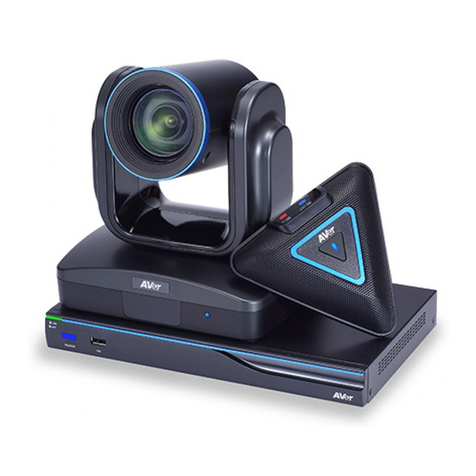TABLE OF CONTENTS
INTRODUCTION .................................................................................................................... 1
Features....................................................................................................................................................... 1
Package Contents........................................................................................................................................ 2
INSTALLATION ..................................................................................................................... 3
Getting Familiar With the EVC -Series.......................................................................................................... 3
Main System............................................................................................................................................ 3
MIC.......................................................................................................................................................... 4
Camera.................................................................................................................................................... 5
Remote Controller.................................................................................................................................... 6
Connections ................................................................................................................................................. 8
Connecting Monitors (VGA Out/HDMI Out).............................................................................................. 9
Connecting the Camera (Camera In) ..................................................................................................... 10
Connecting the MIC (MIC In) ................................................................................................................. 10
Connecting the LAN (RJ-45).................................................................................................................. 10
Connecting the Power (DC 12V)............................................................................................................ 11
Connecting PC (VGA in/DVI In) ............................................................................................................. 11
Connecting the Audio (Audio In/Out)...................................................................................................... 12
USB Storage (USB Ports)...................................................................................................................... 12
CAMERA AND MICROPHONE INTRODUCTION ................................................................... 13
Using the Camera ...................................................................................................................................... 13
Infrared Sensor (IR).................................................................................................................................... 13
Positioning the MIC .................................................................................................................................... 14
AVER EVC WIZARD SETUP ................................................................................................. 15
Start....................................................................................................................................................... 15
Language............................................................................................................................................... 15
Site Name.............................................................................................................................................. 16
Network Setting ..................................................................................................................................... 16
Public IP Configuration (Outside of Firewall):......................................................................................... 17
Private IP Configuration (behind firewall port forwarding):...................................................................... 18
SIP Setting............................................................................................................................................. 20
AVER EVC OPERATION....................................................................................................... 23
Before You Begin....................................................................................................................................... 23
Home Screen ............................................................................................................................................. 23
Configuration Icons................................................................................................................................ 23
Camera and MIC Icons.......................................................................................................................... 24
WAN Address........................................................................................................................................ 24
ReaL-Time Clock................................................................................................................................... 25
System Info............................................................................................................................................ 25
Dial............................................................................................................................................................. 26
Hang up the call..................................................................................................................................... 28
Video Layout.......................................................................................................................................... 28
Phonebook................................................................................................................................................. 29
Group..................................................................................................................................................... 29
New Site (Contact in Phonebook).......................................................................................................... 34
Contacts List.......................................................................................................................................... 38
Favorite.................................................................................................................................................. 38
Call History................................................................................................................................................. 39
General Setting .......................................................................................................................................... 41













































